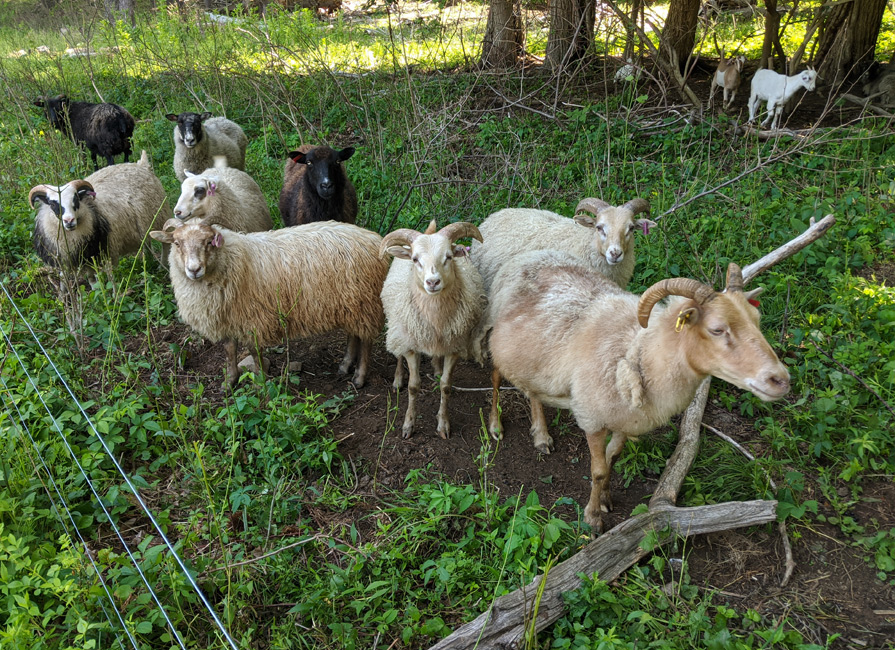Soil nutrient management is a vital part of regenerative farming and applying climate-smart practices can…

Silent Killer
Some livestock diseases enter through an insect bite. Others are tracked on a borrowed trailer or dirty boots. A few reside in contaminated soil or water. While the virus that causes Caprine Arthritis and Encephalitis (or CAE) in goats is sometimes found in the environment, semen, or other locations, infection typically comes from one of two sources: contaminated milk or close contact with infected animals.
CAE is one of several small ruminant lentiviruses, a diverse family that infects goats, sheep, or wild ruminants. Although people can develop anti-bodies to CAE, the virus is not found to cause disease in humans.
It doesn’t cause much trouble in faraway subsistence herds, either. CAE is primarily a disease of ‘high-income economies.’ Much research has been done to determine if susceptibility varies with breed, location, or management, but the results suggest rates of infection simply reflect rates of exposure to infected goats and milk.
CAE is common wherever dairy operations are called operations.
A silent disease
For dairy herds in particular, it often pays to buy and sell goats, pool milk, bank colostrum, and concentrate animals near feeders. While these practices can reduce costs and improve kid health, if CAE is present, they also perpetuate an incurable disease that cripples your animals and your operation. There is no vaccine for CAE, and no treatment other than supportive care. The virus can be removed from a herd only by diligent separation and eventual culling of all infected animals.
How is such a ruthless disease allowed to persist? More than 65% of goats in ‘high-income economies’ are infected, but most show no signs. They simply aren’t as productive as they could be. We keep this virus circulating when we trade infected goats or feed kids CAE-positive milk.
Clinical symptoms
Despite their variability, small ruminant lentiviruses do not appear to discriminate. CAE affects males and females, and goats can be infected at any age. While genetic predisposition may be possible, the major risk factor for a farm is bringing in new animals, and the major risk factors within a herd is use of pooled colostrum or milk and contaminated needles. Direct spread through fecal matter and respiratory droplets is a consideration for any farm trying to eliminate the disease.
Though clinical presentations differ, the main storyline remains consistent: the CAE virus moves in, and your well-bred, well-nourished animal produces a good strong immune response. White blood cells suppress but can’t completely defeat the virus, so the immune system sends more … and more … and more.
Clinical disease results because immune cells accumulate and cause collateral damage in joints, brain, lungs, or udders. Kids are not typically infected at birth, but many become infected while young by consuming CAE virus in colostrum or milk. When the disease shows up at 2–12 months of age, it’s typically due to immune cells damaging areas of the brain and spinal cord, leading to encephalomyelitis. This neurological damage causes incoordination that progresses to paralysis. Hindlimbs are usually affected first. Unusual head positioning, blindness, and seizures are also common.
In adults, CAE most frequently shows up as arthritis. As white blood cells build up in joints, the first sign may be swelling. Over time the immune response damages tissues, leading to stiffness, pain, and lameness. Though transient improvements may occur, CAE arthritis will recur and worsen over time. Mild swelling progresses to lameness, which can become so painful that the animal is reluctant to walk or even stand normally.
CAE virus can also cause coughing or difficulty breathing. An infected goat may develop a swollen or hard udder, with decreased milk production. Energy and nutrients are routed away from production and maintenance, to an immunological standoff. Infected animals may have trouble maintaining a healthy weight as they age, and the quality of the hair coat may worsen over time. CAE sometimes manifests as chronic wasting despite normal appetite, with or without other signs of the disease.
For every five goats infected, four never develop symptoms. They simply carry and transmit the virus, keeping it active in your herd, the colostrum in your freezer, and the milk in your bottles.
Take action
As there is no vaccine for CAE, and no effective treatment, how can you protect your herd?
- Exclude: A closed herd is the best barrier against bringing in CAE virus. If you do buy in goats, talk with your veterinarian to establish pre-purchase testing protocols. Many goats are infected while young, but older animals are more likely to have been exposed. Note: pregnant does and goats that were recently infected may test negative.
- Detect: Thanks to silent carriers and long incubation, CAE virus can fester in your herd for months or years after you introduce an infected animal and before disease signs emerge. Monitor heath status by checking your animals regularly and thoroughly (see ‘Health and Safety’ in Sustainable Farming Summer 2022). If you have reason to suspect CAE, test. Newly infected goats can test negative, so work with your veterinarian to create a plan that will provide meaningful information.
- Control: Treatment for CAE is supportive, not curative. Provide ample bedding for arthritic goats, and trim feet regularly. Manage pain with medic-ation as needed and be prepared to euthanize, when appropriate.
Work with your vet
CAE is common in commercial dairy goats but it doesn’t have to be. Entire nations have eliminated this virus. Given the devastating impact CAE has on the animals it affects—and on your bottom line—it is worth the strict control measures, the cull commitment needed to eliminate it from your herd, and the diligent pre-purchase screening to keep it out.
If you bring goats into your operation, work with your veterinarian to establish testing protocols that can keep your farm free of CAE.
CONTROLLING CAE AT THE NEW HERD LEVEL
Prevent new infections and maintain a long-term plan to cull all positive animals.
- Separate kids from CAE-positive does at birth.
- Heat-treat colostrum, and feed pasteurized milk.
- Test regularly and maintain strict separation between positive and negative animals.
- Disinfect equipment and change your boots before moving between groups.
- Cull CAE-positive animals.
Author: Jennifer Gravley Burton DVM is a veterinarian and educator with a special interest in the intersection of food animal medicine and public health
Originally published in the Fall 2022 issue of AGW’s Sustainable Farming magazine.



